Isolated and self-contained, the Battery City Park is an amalgamation of downtown’s rich history and envisioned future. It offers the perfect mix of commercial, residential and open space and is the fastest growing community in the lower Manhattan area.
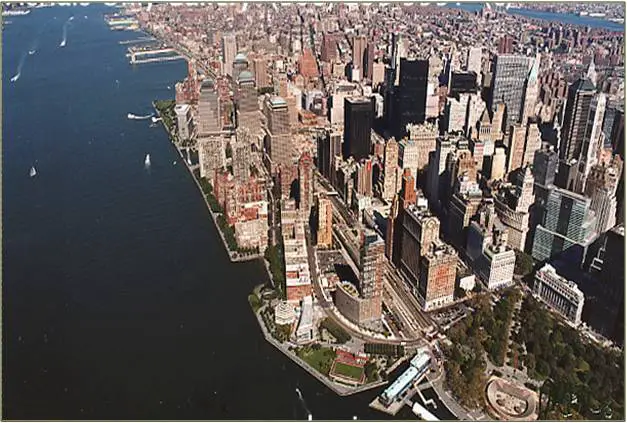
PROJECT: Battery City Park
LOCATION: Manhattan, NY
BUILDING TYPE: Residential, Commercial, Recreational
CATEGORY: Urban renewal/Greenfield development
YEAR: 2000
AREA: 92 acres
CITY STRUCTURE:
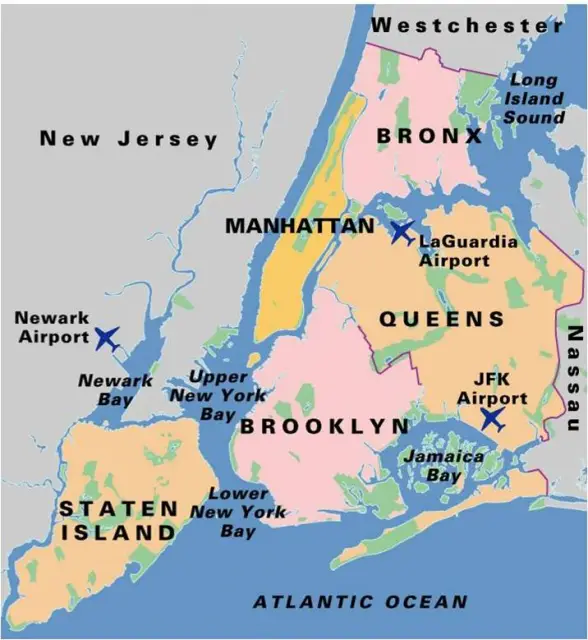
New York
New York is composed of 5 boroughs. Battery Park City is located at the southern most tip of the borough of Manhattan.
Manhattan itself comprises of an Uptown, Midtown and Downtown Area – all unified by a grid structure.


LOCATION:
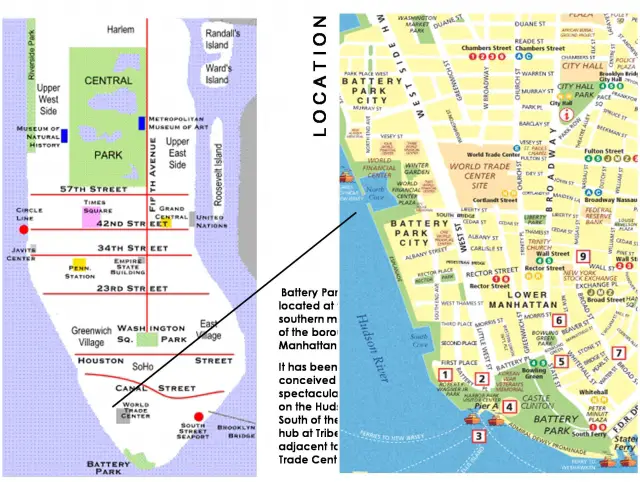
LAND USE PATTERN:
The 1979 Master Plan by Alexander Cooper and Stanton Eckstut allocated the land use structure for the entire area. Then land was parceled and leased to private developers who built on them in accordance with Design Guidelines created especially for Battery Park City.
The complex combines primarily commercial and residential uses. Small percentages of amenities (school and library) and recreational (museums) uses also add to the over all development.
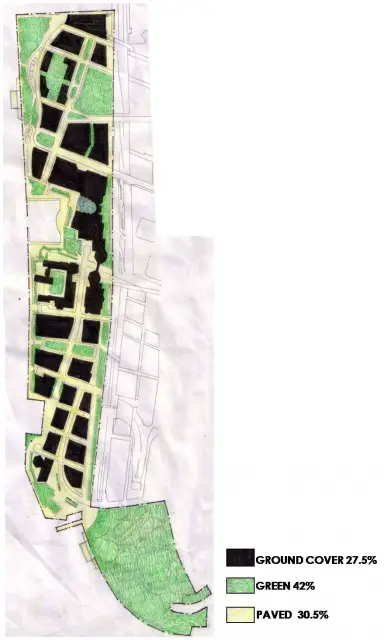
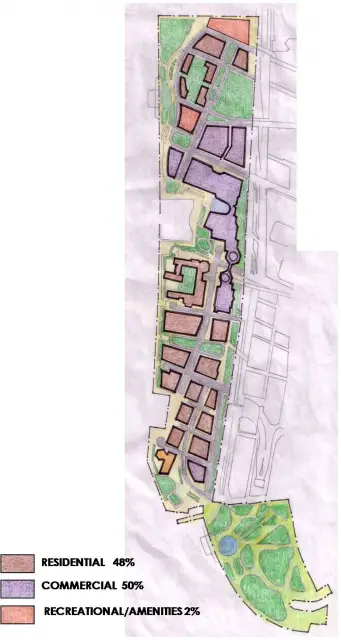
ACCESS:
The complex is a city in itself. The West Street acts as the spine and provides vehicular movement along the entire length of the site.
Several smaller streets branch off it that lead one into the site.
Overhead walkways for pedestrians are provided at 3 points across the Street.
Since the site is situated by the river, it is also accessible through ferry and waterways. There are 2 coves that act as entry points, and one ferry terminal to the Statue of Liberty.
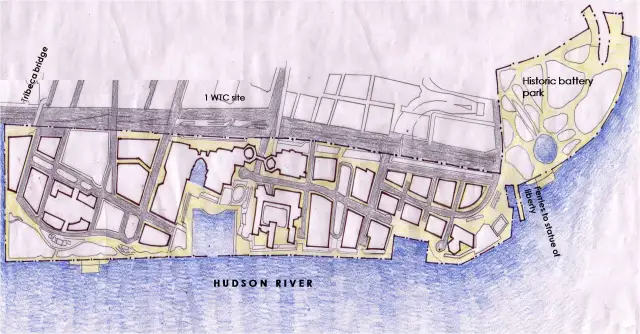
CONNECTIVITY:
Although Battery Park City is well serviced by buses that traverse within the site, there is no direct subway connection. One must alight off at Battery Park Station in the south or other stations just across the West Street and then walk to their home/place of work.
One advantage to this seemingly disadvantage is that the site is not reduced to the status of a thorough fare.
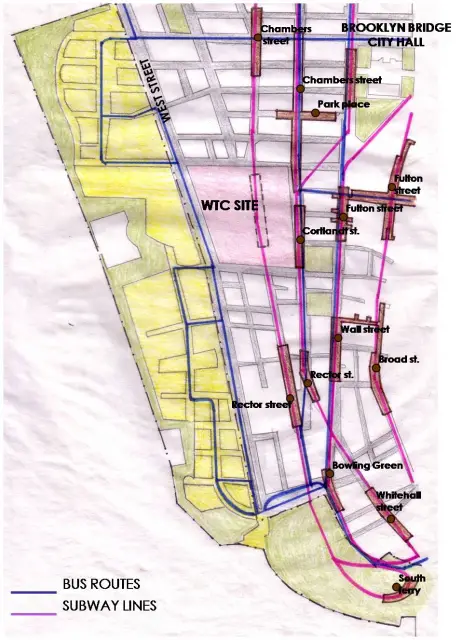
CONCEPTION:
Battery Park City began as a vision of what cities could be in the future. Known as a financial and business epicenter, of both New York and the world, the areas of lower Manhattan gradually became an in-demand center for residential housing as well.
It has been home to many innovative ideas to improve the urban experience.
There were many different plans for Battery Park City proposed between 1962 and 1975. They all had three goals in common:
- To expand the area of lower Manhattan;
- To get people living downtown again; and
- To provide lower Manhattan with a few more trees and some open space.
1962 – REVITALIZATION:
Collapsing status of 20 piers in the Hudson River in Tribeca region initiated the earliest ideas for Battery Park City.
A study of the Hudson waterfront revealed that the site may have a different potential.
The idea was to build an “unprecedented new city” on top of the shipping terminals, with a sort of industrial esplanade along the edge.
The plan to combine housing and offices along with cargo handling however was badly received.
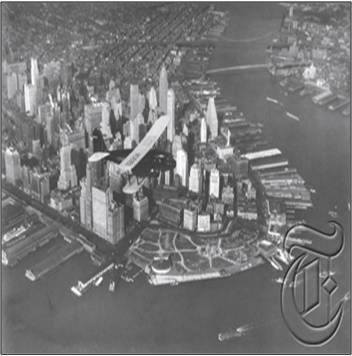
1966 – INTEGRATED SOCIETY:
The idea of building above the piers seemed like an attractive proposition for one can house a lot of people without displacing entire communities.
- The Governor’s plan was to not simply house people coming out of slums but to give them a superior quality of life. However this scheme too was not well received –housing projects for the poor were beginning to fail in New York.
- The style was orthodox Corbusian modernism, which was quickly losing popularity and the design itself seemed overly standardized and having little to do with this particular site.
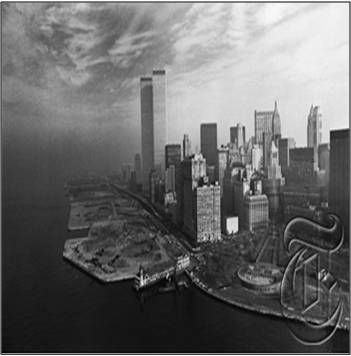
1969 – HIGH TECHNOLOGY:
Battery Park City Authority, formed in 1968, tossed the most elaborate urban plan essentially consisting of a seven-story mall, containing urban functions and amenities – shops, restaurants, schools, parks, rapid transit, utilities, public and recreational facilities.
This service spine ran the length of Battery Park City as a partly glassed-in, partly open “lifeline,” to which all the buildings were plugged in.
The master plan was a modular assembly of futuristic designs that incorporated pedestrian traffic with park-like spaces on one level and transportation uses on another subterranean level.
The plan was well received but its timing was off the ´73 recession had hit. Investors were unwilling to commit themselves to such an untested concept.
1975 – DEFENSIBLE SPACE:
The 1969 plan was slowly picked apart, its grandiose public infrastructure was cast off.
The Battery Park City project was broken down into discrete residential clusters that could be developed independently and incrementally. These were called “pods” one of which, Gateway Plaza, was built.
The pod has just one guarded entrance to provide a controllable, safe environment for three or four thousand people. The city at large was kept out. This was the developer’s solution to the problem of middle-class suburban flight: the attempt was to bring the suburbs to the city.
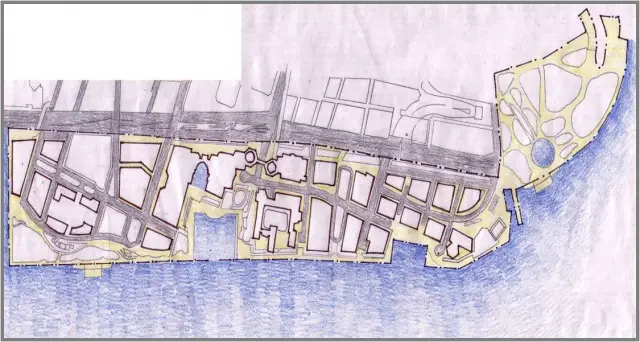
1979 – PRACTICAL REALISM:
Streets and sidewalks were returned to grade level and made an extension of Manhattan’s grid (as had been done in all earlier landfill expansions of lower Manhattan). This yielded conventional development blocks, which, in turn, yielded conventional building forms.
Each block could be parceled out to different developers at different times, according to market demand.
The commercial center was moved from the southern end of the site up to the middle, tying it to the World Trade Center.
The plan is more a framework for development than it is a fixed design. This has allowed a great deal of flexibility in actual execution and has served as a basis to bring a diversity of uses, buildings and parks to Battery Park City, all within a context that relates everything
PRIMARY GUIDELINES FOR THE LANDUSE AND WATERFRONT DEVELOPMENT IN THE REGION:
• Reflect changing conditions. Enact comprehensive zoning changes to address the dramatic changes that have taken place in recent decades, and to prepare the communities for the twenty-first century.
• Promote housing opportunities. Capitalize on vacant and underused land for new housing development, addressing both local and citywide needs.
• Address neighborhood context. New development should fit in with its surroundings, building on the strong character of the existing neighborhoods.
• Create a continuous waterfront walkway and maximize public access to the waterfront. Establish a blueprint for a revitalized, publicly accessible East River waterfront.
• Facilitate development that will reconnect the neighborhood to the waterfront. .
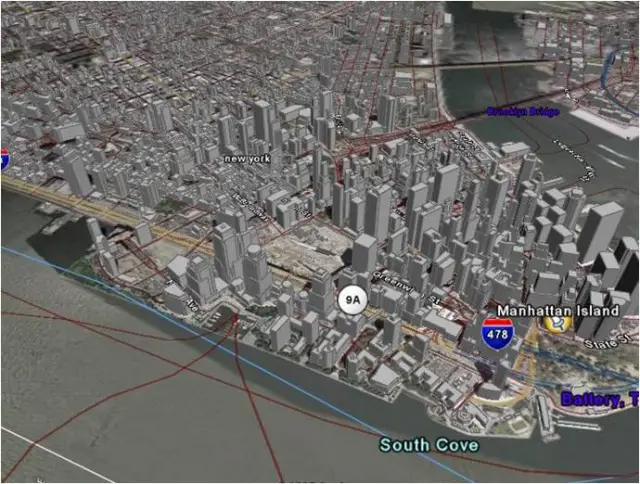
The result is a varied set of responses to these fixed set of guidelines.
LANDSCAPE DEVELOPMENT:
An outstanding feature of the Battery City park is the high percentage of open areas it allows for while providing for sufficient floor area as well. The site is home to about 35 acres of parks which act as community and recreational spaces.
The project has won many awards for its unique landscape designs. The firm of Hanna/Olin has received much appreciation for their designs that celebrate public space, fusing functionality, aesthetic and symbolic richness.
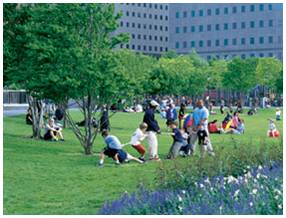
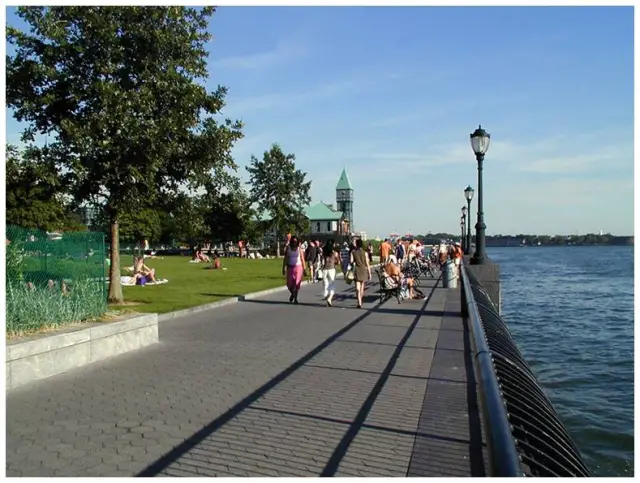
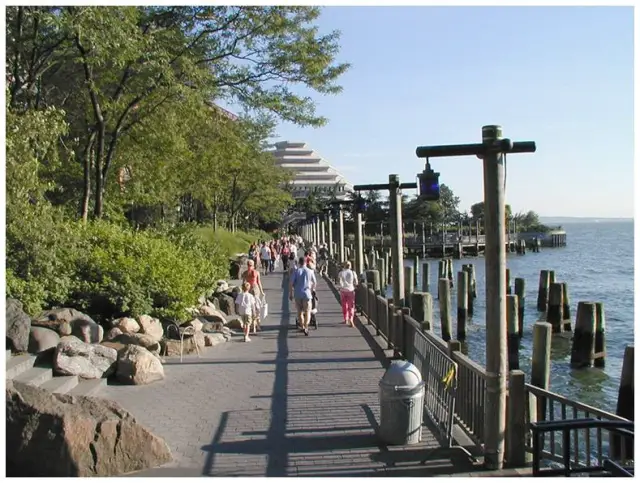
To learn more, visit: Comparision Between Barbican Center, Federation Square, BatteryPark City & Jian Wai Soho
This presentation was created by: Meghna, Nivedita, Sunny, Ved (2005)

Leave a Reply
You must be logged in to post a comment.